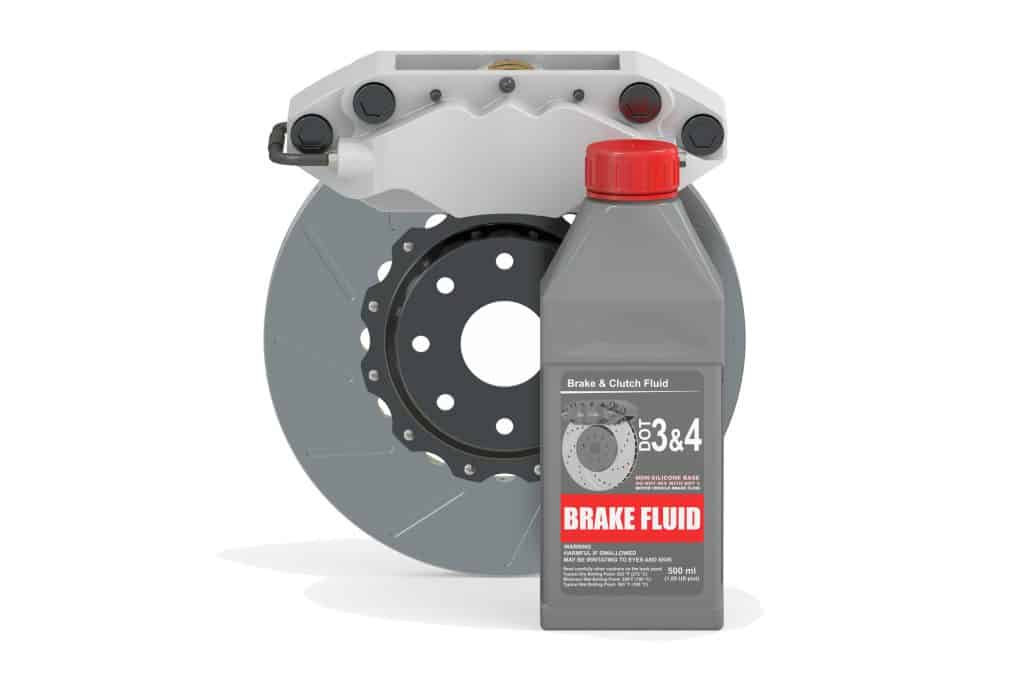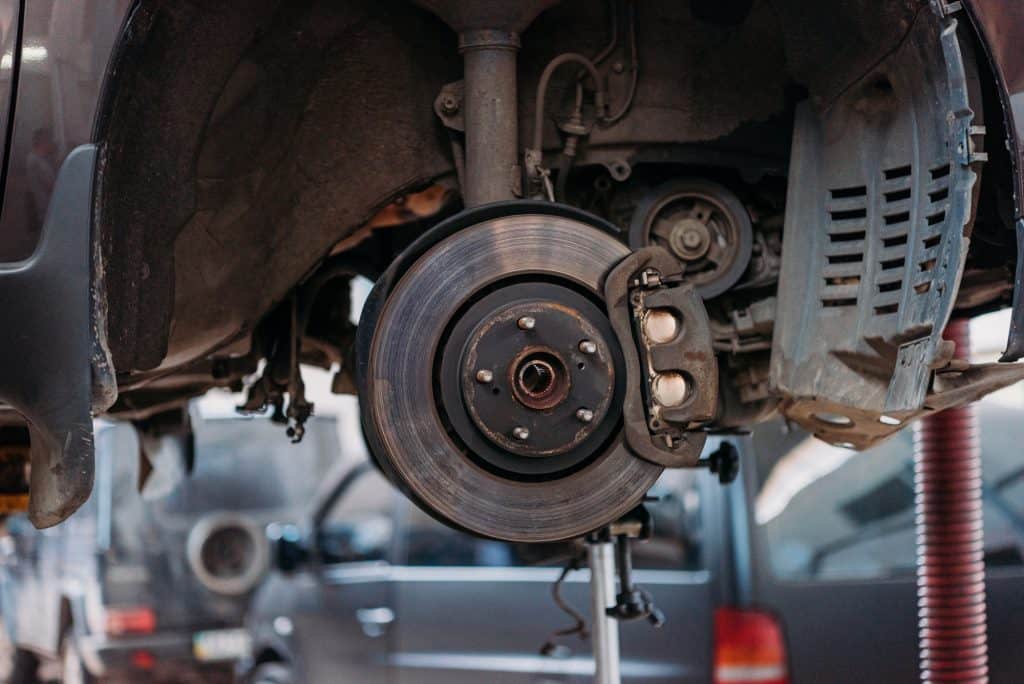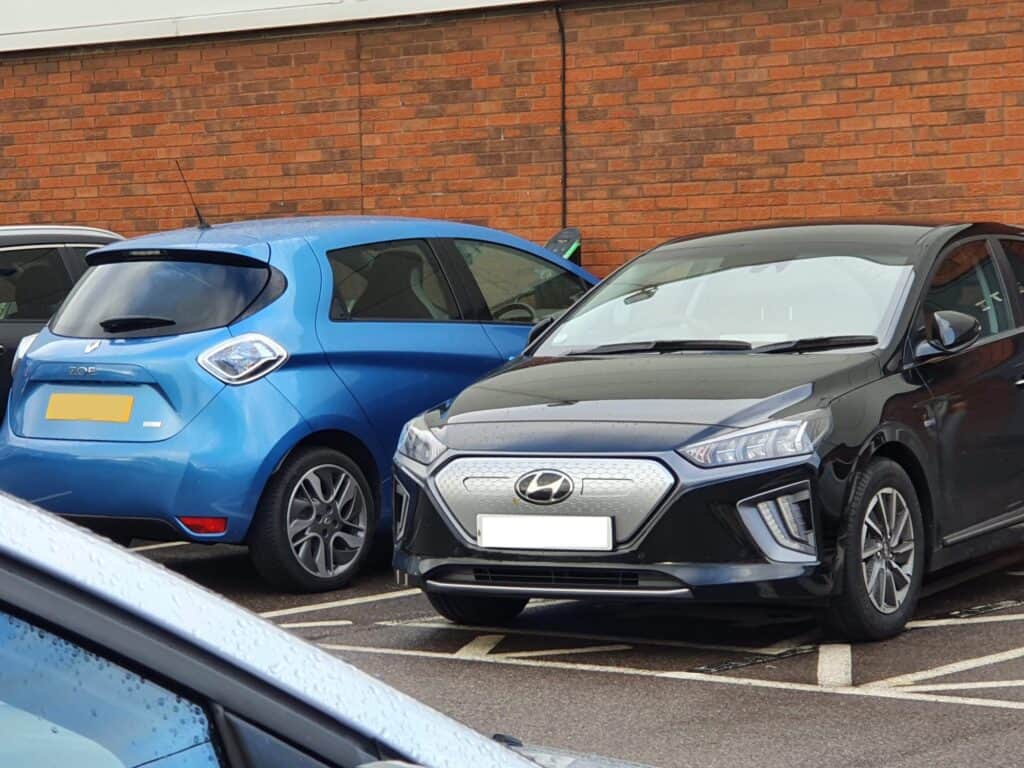As we are increasingly encouraged to embrace electric vehicles over gasoline models, we are being told a lot of their many advantages. One such advantage comes in the form of maintenance. Since there is no internal combustion engine in an EV, the amount of maintenance that needs to be done over time is drastically reduced.
One such difference is seen in the amount and number of fluids that are required for each vehicle type. We all know, for instance, that internal combustion engines require engine oil in order to run smoothly and properly.
Without engine oil, high levels of friction create unbearable heat as the parts relentlessly grind over each other. After not such a long time, the engine will simply destroy itself. Engine oil is not, however, required in electric cars.
But do electric vehicles run completely dry? Do they require no fluids at all? In today’s blog, we’ll be exploring questions surrounding electric vehicles and fluids.
What Fluids Do EVs Need?

Broadly speaking, there are 4 main fluid types that even electric vehicles cannot do without. They are:
- Coolant
- Brake fluid
- Windshield washer fluid
- Transmission fluid
How much of each fluid type and the exact form it takes does depend on the exact model of the car (see next section for more), but these 4 remain fluids that are common in electric vehicles in one form or another.
EV Coolant
We may think of heat and picture in our minds the searing heat of an internal combustion engine managing its fuel/air explosions and mitigating the friction of all the moving and interconnected parts. The fact is though that electric vehicles are not immune from the problems of heat and overheating. Both the battery and electric motors will become hot through their normal operations.
The main area in need of cooling is the lithium-ion battery pack. While there are several different methods used for cooling of these battery packs, the principal one is via liquid cooling. The use of non-conductive fluids designed for heat transfer has been quite normal in EVs for many years already. Such fluids are ideal because they are specifically designed for fire suppression and the transfer of heat away from a target area. They’re even used to cool supercomputers.
As a functional material, these coolants’ main job is to manage the temperature of the battery, principally to prevent overheating and ensure that fires cannot occur. If you’ve ever read about EVs setting on fire before, then a battery overheating is typically the cause. Sometimes even the coolant isn’t enough if there are other fundamental design flaws in the battery, as Chevrolet have been discovering recently with their own Bolt batteries.
EV Brake Fluid

If you own an EV, are you yet to replace the brake pads? You might have forgotten all about traditional brakes because you have already become so used to using regenerative braking. Thanks to this technology, those EVs that have it can now enjoy a much longer lifespan on traditional brake pads and surrounding components because the need for drivers to apply the brakes via the brake pedal is so drastically reduced.
Brake fluid, however, remains necessary for the whole system to function properly. The good news is that thanks to regenerative braking generally being far more balanced and efficient, the fluid and the parts all tend to last much longer than conventional brakes on gasoline cars.
Windshield Washer Fluid
This one is fairly straightforward. Elon Musk’s team hasn’t yet come up with an over-the-air update that can initiate some kind of AI-based windshield cleaning. That being the case, we still rely on fluid stored somewhere under the hood to provide us with enough cleaning power to keep the windshield clear and maximize visibility.
What’s interesting with many EVs is that the windshield washer reservoir is the only one of the above fluid points that you can actually access and refill yourself. We’ll cover more about that in another section further below.
Transmission Fluid
Finally, we come to transmission fluid. We’ve placed it here in this list because there are electric vehicles that do make use of transmission fluid, but actually right now it is not quite the norm. There are some notable examples of cars that make use of transmission fluid, such as the Tesla Model S, but many cars in fact do not. In place of traditional transmission fluid, they use alternative lubricants for transmission parts, but the absence of differing gear ratios makes transmission fluid generally unnecessary for many EVs.
Tesla models besides the Model S, for example, make use of special lubricating fluid in their reduction gearboxes. On some older Model 3 and Model X variants, this fluid can even be accessed and changed. On the very newest models, however, it is designed to be absolutely maintenance free for the lifetime of the vehicle. That’s Tesla’s assertion, at least, but the reality is that these fluids do need attention after about 100,000 to 150,000 miles.
Is it the Same for All Models?

The first three things from our list above, namely coolant, brake fluid and windshield washer fluid are common to all EVs. Liquid cooling is currently the only viable method of cooling that can sufficiently manage the temperature fluctuations and changes that are occurring. Coolant is not only needed in the car itself, but also in the EV charging stations and even in the charging cables.
Brake fluid and washer fluid are also ubiquitous since EVs are still cars on public roads with the need to meet basic safety requirements set in their local markets. Brakes need to be operable, and windshields need to be clear of any and all things that may obstruct the driver’s view. These two fluids are far from being replaced in those capacities.
As for transmission fluid, we already mentioned further above that this one depends on the car maker. The general rule of thumb is that transmission fluid as we currently know it — the red or pink glossy fluid we use in our internal combustion engine cars — is not required in electric vehicles. The reason for this is that typical EVs do not use different gear ratios as you’d find in manual/automatic transmissions. They work on a single gear ratio with torque being transmitted directly to the wheels by the electric motor, which of course gets its electrical energy from the lithium-ion battery pack.
One notable exception is the Tesla Model S, which does indeed make use of transmission fluid, specifically Dexron VI Automatic Transmission Fluid. Each drive unit within the Model S requires a different amount, namely 1.5 quarts on the rear large drive unit, 2.4 quarts on the rear small drive unit, and 1.8 quarts on the front small drive unit. This transmission fluid needs changing after the first year, or after 12,500 miles, whichever were to come first. From there, it needs to be changed again at year 5 and after year 9.
The Model S is the most distinct currently on the market. Other EVs generally only need the first three of our four mentioned critical fluids.
Can You Change the Fluids Yourself?
One of the great things about having a traditional gasoline car is that you can perform just about all of the maintenance yourself if you have the inclination, the right tools and the relevant knowledge.
You can do your own oil changes, switch out your transmission fluid and brake fluid, change your own tires, repair and replace broken components, and more. Electric vehicles are not always quite as accessible when it comes to maintenance, and this is especially true of the fluids.
First of all, as we mentioned when discussing the common EV fluids, one of them remains as accessible as before, and that’s the windshield washer fluid. EV owners can easily get to the windshield washer reservoir — it’s usually located somewhere under the trunk — and top up the same way that you would on your gasoline car.
What about brake fluid and coolant? Brake fluid can be changed on various models if you know how. One YouTube channel, “Andrew Fixes,” demonstrated how the brake fluid of a 2015 Nissan Leaf can be changed on one’s own without having to take it to an autoshop. It all depends if the main reservoir is accessible or not. If you pop open the Nissan Leaf hood, you’ll find it there. It might not always be the case.
As for coolant, the storage area is typically not accessible without first removing a lot of the outer parts of the “frunk” (front trunk). On a Tesla Model 3, for example, you have to remove the maintenance panel, the HVAC intake duct and then the entire frunk tub in order to gain access to the coolant area. That’s actually quite a task, and strongly suggests that this area is not meant to be accessed by the car’s owner. If it were, it would be much easier to do so.
The same is true for lubricating fluids and transmission fluid in Teslas and other EVs that make use of similar lubricants for their transmissions and other areas. When it comes to changing or checking on your EV fluids, the best rule to follow is that if the fluids are immediately accessible without having to dismantle any part of the car, then it is designed to be easily changed and quite possibly by the driver. If you can’t access it, then the best bet is to take it to the service center and let the professionals take a look.
How Much Do Fluid Changes Cost at an Autoshop?
The good news is that despite the cars being different from gasoline cars, you shouldn’t expect to pay much different than you would normally for these various fluid changes. Brake fluid changes, for example, shouldn’t cost more than $100 or so, and coolant changes can range up to about $200 depending on the make and model.
On the other hand, remember all the maintenance that you don’t need because you drive an EV, such as new spark plugs, oil changes, cylinder repairs, drive belt replacements, blown head gaskets and more. You save a lot over the lifetime of your vehicle by not having to worry about these problems any more.

Hi Tristan… An interesting article…thanks. I have a question I cannot seem to find the answer to… “What is the coolant fluid (glycol?) in a 2021 Hyundai Kona EV?” Mine seems
to be a bit low in the reservoir and I want to top it up. Dealer wants $116 Canadian for a jug. Surely autoparts shops have something similar (NAPA, CarQuest, etc.). Thanks for any help. ~Jim.